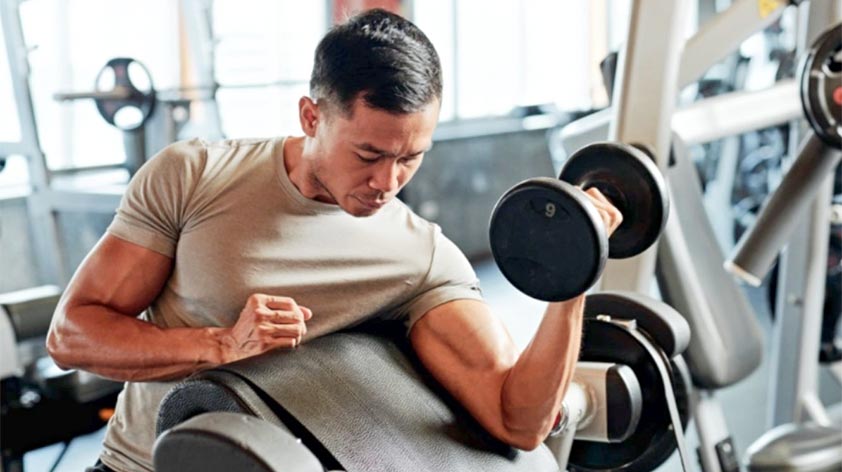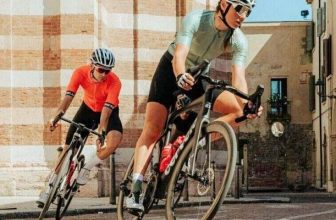
Resistance training in your older years can generate a wealth of health well into your later years of life. Have you noticed within the last few weeks yourself or even your friends starting to get injured more frequently? This could be due to some very common side effects that we suffer from as we get older. However, these can be readily improved as you start or continue to do resistance training.
Does resistance training mean being that really buff guy at the gym with 500lbs on the bar? No. Resistance training can consist of readily available exercises at the gym, or even in your own home! Movements can include anything from stair climbing to performing animal-style movements using only your body weight, or doing exercises with a basic pair of dumbbells. Find out more in Bone Density: How to Begin Resistance Training As You Get Older!
Have you heard of the terms osteoporosis or osteopenia? Both of these essentially mean a loss of bone density. This has led to the geriatric population, 50 and up, having 250,000 hip fractures a year with the majority of them being hospitalized.
With this statistic, we find that osteoporosis could be a main cause for this, as it brittles the bones and exponentially increases risk for bone fracture injuries. Through strength training we find that bone density increases by up to 3% while demonstrating a slowed mineral loss in the bones. Not only does resistance training decrease the adverse effects of osteoporosis, it even reduces your fall risk, bone fractures and increase in protective muscle mass.
Resistance training can improve the physical quality of life of the aging adult. So we know that there is a huge benefit to incorporating resistance training into our daily lives as we age. However, at this point you must be wondering how do I begin to introduce this into my workouts and daily life? Follow on and find out!
Free Weights
Through studies, it’s been shown that free weights are more effective than using machines at the gym. Thus, this proves that adding resistance to our body weight movements will be the most effective.
So, how can we incorporate this? If you have a membership to a gym then this will be easy. Simply utilize the free weight section instead of the machines for your exercises.
Then to increase the process of increased bone density, you should focus on the bigger muscle groups like the leg muscles, back and chest. Movements such as the squat and Pallof press are great since you incorporate more muscle groups, and thus generate greater impact for your effort.
This can also be easily enhanced by increasing the amount of weight you use or even as simple as slowing down the movement. However, we understand that not everyone has access to a gym or feels comfortable going to one. Therefore, we recommend locating a personal training service, comparable to a company like Mobile Trainers in your area that can bring weights, bands and accessories to your home.
Utilizing this type of equipment in your routines will vastly increase the demand set on your bones and muscles. Mobile Trainers can even work with a very minimalist set up and still achieve the same goal.
Bodyweight Movements
You can begin with simple movements like walking on a flat surface, walking on some elevated surface around your house like that step up from the garage door into the house, or stepping up and down the stairs.
Then, you can slowly introduce more bodyweight movements like wall-squats with a slight knee bend and animal movement-style exercises crawling on all fours. Once you have progressed through some of these basic movements, you can advance to more advanced ones like planks, push ups, and squats.
Going with our squat example, once you master your body weight you can hold on to a gallon of milk and start doing more reps.
However, it’s important to remember that an exercise like power walking is still a great ‘moderate’ resistance training exercise as we have to support our body weight and keep the “S” spine posture. This means, shoulders back, chest out, and stomach in.
On the other hand, cycling and swimming do not involve much weight loading so they do not help increase bone density significantly.
Safety & Technique
With these exercises in mind, a structured, scientifically sound program will help bolster the process of increased bone density and muscle mass. As with all those who get into resistance training, safety and technique are critical to success.
We highly recommend the guidance of a trained professional when beginning your resistance training program. An in-home personal training service (who are totally committed to you getting to your goals) will help you to gain increased mobility, perform proper movement, and gain and maintain as much bone density as possible whilst ensuring a safe, and successful fitness journey.
The goal of a quality mobile trainer will be to educate you to the point that the mobile training service is no longer necessary, because you will ultimately possess the tools needed for continued success yourself.
Are you getting into weight training or resistance training in your later years? What challenges have you come across? Do you need a sympathetic, yet motivating personal trainer to help you get the results you want? Let us know in the comments below, and join in the conversation on Facebook, Twitter & Instagram!









